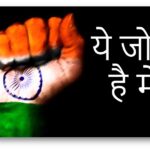To Be Or Not To Be: Should Brands Reinforce or Shatter Stereotypes?
 The germ of this article lies in the recent flutter that an interview by the CEO of a cola major has caused in the sociosphere [1] [2]. This post however, is not to express an opinion either for or against the views put forth but to raise a related relevant question. The question is with regard to stereotypes and the role brands and brand communication should be playing. If at all brands and brand communication have any culpability/responsibility with regard to reinforcing or breaking stereotypes.
The germ of this article lies in the recent flutter that an interview by the CEO of a cola major has caused in the sociosphere [1] [2]. This post however, is not to express an opinion either for or against the views put forth but to raise a related relevant question. The question is with regard to stereotypes and the role brands and brand communication should be playing. If at all brands and brand communication have any culpability/responsibility with regard to reinforcing or breaking stereotypes.
As marketers sending out communication for and on behalf of our brands we rely heavily on our (collective/organizational/gut/experience) understanding of the consumer. The endeavor always is to gain and convert that killer insight into brilliant communication that hits home. It is for the keen eye to distinguish and separate the wheat from the chaff.
Brand communication over the years has tended to rely heavily on the stereotypes that society offers. These may be discrete pieces of communication from different brands but to consumers/audiences expose to this communication it is a single mass from which certain subliminal messages emanate albeit without being planned.
To explain my point and to connect back to the germ of this article I shall take the example of the stereotypes about women that get or got reinforced. Now it is important to note that each brand is doing its own bit and approaching it based on what its insight is about its category and consumer. However, they collectively end up reinforcing a certain image.
Take the commercials that were being aired on India television during the late eighties, even well into the nineties. The stereotype that was being reinforced was that of the Indian woman as the dutiful housewife. It was her responsibility to keep the utensils, clothes sparkling clean. She needed to ensure ends were met, kids were fed, even cook food good enough to keep the husband’s boss happy. As if all that were not enough she needed to look good and smell good for her husband when he came back home.
http://www.youtube.com/watch?v=PMYFCb_c0A0
Sign of times well not really, considering it would be round about this time that the Indira Nooyis, the Chanda Kochhars, the Naina Lal Kidwais and the Kiran Mazumdars were climbing rungs of the corporate ladder.
The India of the late eighties and nineties did not exist in a bubble. It was simply taking a leaf out of or getting “inspired by” communication of that was being aired elsewhere in Europe and America. It was taken to a satirical level in the book (and later on the movie adaptations) The Stepford Wives by Ira Levin.
There have been examples of brands attempting to break stereotypes as well. An example that comes readily is a campaign by a personal hygiene brand when they chose to dump the veiled, almost apologetic “Woh zaroori din” (translated: “those important days”) approach and said it like it is.
It’s not as if women alone have been subjected to such stereotypes. Men have been brought up with their own set of expectations to live up to. Advertising is replete with exaggerated versions of males as performers, winners, saviours of the world etc. etc. Gender stereotypes apart, brand communication has at times relied on race, colour and ethnic stereotypes as well. These were perhaps found acceptable in the times they were aired.
Ad creators and brand managers across the world will continue to deal with their existential dilemma of reinforcing or breaking stereotypes that form in our society.
So who really is to blame if one feels obligated to conform to these stereotypes? If it is indeed the society then the answer at some level is I, Me and Myself.
To close a few lines penned by the Bard of Avon from Hamlet.
“To be, or not to be? That is the question—
Whether ’tis nobler in the mind to suffer
The slings and arrows of outrageous fortune,
Or to take arms against a sea of troubles,
And, by opposing, end them?”


